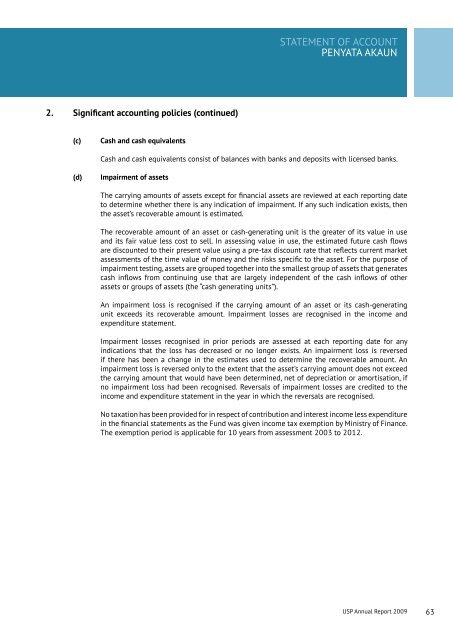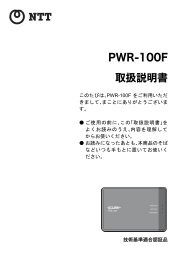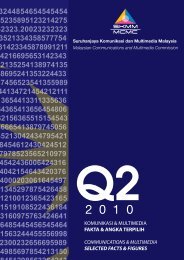3 - Malaysian Communications And Multimedia Commission
3 - Malaysian Communications And Multimedia Commission
3 - Malaysian Communications And Multimedia Commission
Create successful ePaper yourself
Turn your PDF publications into a flip-book with our unique Google optimized e-Paper software.
STATEMENT OF ACCOUNT<br />
PENYATA AKAUN<br />
2. Significant accounting policies (continued)<br />
(c)<br />
Cash and cash equivalents<br />
Cash and cash equivalents consist of balances with banks and deposits with licensed banks.<br />
(d)<br />
Impairment of assets<br />
The carrying amounts of assets except for financial assets are reviewed at each reporting date<br />
to determine whether there is any indication of impairment. If any such indication exists, then<br />
the asset’s recoverable amount is estimated.<br />
The recoverable amount of an asset or cash-generating unit is the greater of its value in use<br />
and its fair value less cost to sell. In assessing value in use, the estimated future cash flows<br />
are discounted to their present value using a pre-tax discount rate that reflects current market<br />
assessments of the time value of money and the risks specific to the asset. For the purpose of<br />
impairment testing, assets are grouped together into the smallest group of assets that generates<br />
cash inflows from continuing use that are largely independent of the cash inflows of other<br />
assets or groups of assets (the “cash generating units”).<br />
An impairment loss is recognised if the carrying amount of an asset or its cash-generating<br />
unit exceeds its recoverable amount. Impairment losses are recognised in the income and<br />
expenditure statement.<br />
Impairment losses recognised in prior periods are assessed at each reporting date for any<br />
indications that the loss has decreased or no longer exists. An impairment loss is reversed<br />
if there has been a change in the estimates used to determine the recoverable amount. An<br />
impairment loss is reversed only to the extent that the asset’s carrying amount does not exceed<br />
the carrying amount that would have been determined, net of depreciation or amortisation, if<br />
no impairment loss had been recognised. Reversals of impairment losses are credited to the<br />
income and expenditure statement in the year in which the reversals are recognised.<br />
No taxation has been provided for in respect of contribution and interest income less expenditure<br />
in the financial statements as the Fund was given income tax exemption by Ministry of Finance.<br />
The exemption period is applicable for 10 years from assessment 2003 to 2012.<br />
USP Annual Report 2009 63
















